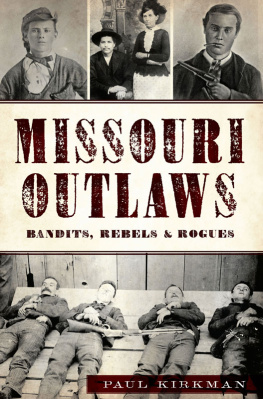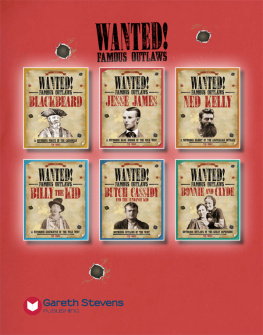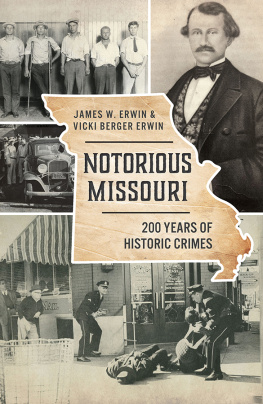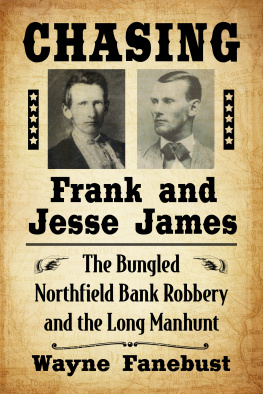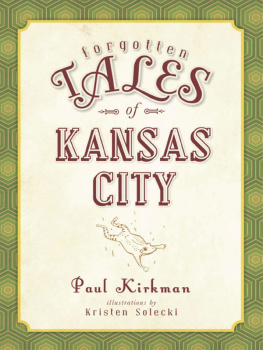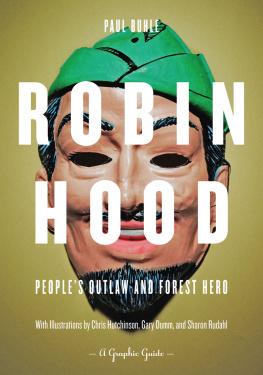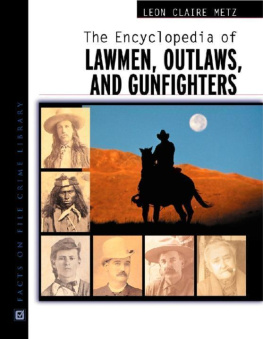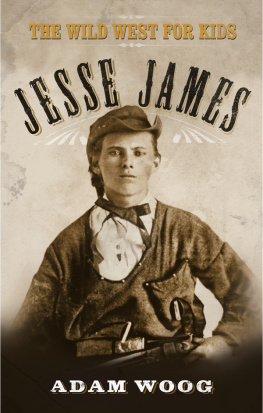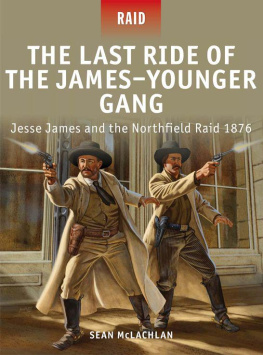
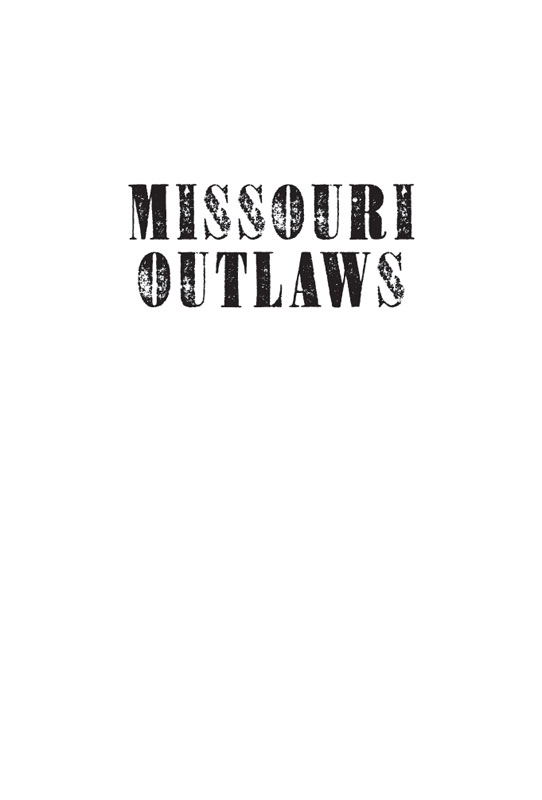

Published by The History Press
Charleston, SC
www.historypress.net
Copyright 2018 by Paul Kirkman
All rights reserved
Front cover, top left: courtesy Library of Congress: LC-USZ62-3855; top center: courtesy Wikimedia Commons; top right: courtesy Missouri Valley Special Collections, Kansas City Public Library; bottom: courtesy Wikimedia Commons.
First published 2018
e-book edition 2018
ISBN 978.1.43966.411.7
Library of Congress Control Number: 2017960104
print edition ISBN 978.1.62585.915.0
Notice: The information in this book is true and complete to the best of our knowledge. It is offered without guarantee on the part of the author or The History Press. The author and The History Press disclaim all liability in connection with the use of this book.
All rights reserved. No part of this book may be reproduced or transmitted in any form whatsoever without prior written permission from the publisher except in the case of brief quotations embodied in critical articles and reviews.
To Bill and Kay Kirkman
CONTENTS
Chapter 1. Frontier Roots
Log Lockups
Chapter 2. Trails West
Stone Stockades
Chapter 4. Ruffians, Bushwhackers and Guerrillas
Brick Bullpens
Chapter 5. The Undefeated
Squirrel Cages and Other Ingenious Innovations
Chapter 6. Beyond the Border
Walls That Talk
Chapter 7. Ornery Ozarks
Castles and Courthouses
INTRODUCTION
I was born in Colorado and spent most of my youth in Kansas, but I have lived in Missouri some forty years now. It has taken time to understand this place. From the weather to the politics, Missouri is volatile and unpredictable. It is farm country, with lots of rivers and springs and good bottomland; but much of it is hill country with thick woods and rocky slopes. The sparsely populated Ozarks surround Branson, country musics second home, a little town overcrowded with thousands of tourists, theaters, stars and ex-stars. St. Louis and Kansas City bookend the east and west sides of the state, respectively, each brimming with people living urban and suburban lives free of country accents and bib overalls. Tiny towns with populations tallied in dozens, as well as several towns that measure in the thousands and tens of thousands, dot the state. Missouri is not just one thing or people. There is a culture, a character here that is both friendly and taciturn. We cant even agree on how to pronounce our own name; it is Missour-eee or Missour-uh, depending on where you live. A wild frontier at the beginning of the nineteenth century, Missouri grew up in the golden years of westward expansion. Trails teeming with immigrants wagons stretched the states reach out to Santa Fe, California, Oregon and Colorado. The wealth of western farms, ranches and mines was funneled back to the East Coast and beyond. I have been sorting it out for myself over time, and I think this book will at least point the way toward understanding part of Missouris role in the shaping of American culture.
When I was relatively new to the state, I saw a bumper sticker on an old pickup that read, Im from Missouri, and I will shoot you. I remember asking a friend who grew up here what it meant. He said, Quick, name the two most famous people you know from Missouri. I thought about it, and he grinned as I came up with Jesse James and Harry Truman. He said, One robbed trains and the other dropped atomic bombs.We arent the sort of folks you want to play chicken with. It is true that from its difficult entry into the Union and throughout the nineteenth century, Missouri and Missourians developed a reputation for stubbornness (the state animal is the mule), pragmatism (it is, after all, the Show-Me State) and outlawry (far more than just the James Gang). To be fair, the majority of Missourians have been and are peaceful, law-abiding citizens, but a review of the facts (and the fiction) makes clear why nineteenth-century Missouri was labeled the Outlaw State.
My original inclination when considering how to tell the story of the outlaws was to start from the vantage point of the states remaining nineteenth-century jails, and you will still find that thread running through the book. In 2009, I was given the opportunity to help Jackson County Historical Society archivist David Jackson research and write a history of the 1859 jail and marshals home in Independence. That project taught me how intertwined the local jail could be with a communitys development and history. William Faulkner explored the depth of this sentiment in Intruder in the Dust:
It was old, built in a time when people took time to build, even jails, with grace and care and he remembered how his uncle had said once that not courthouses nor even churches but jails are the true record of a countysa communitys history, since not only the cryptic forgotten initials and words and even phrases cries of defiance and indictment scratched into the walls but also even the very bricks and stones themselves held, not in solution but in suspension, intact and biding and potent and indestructible, the agonies and shames and griefs with which hearts long since unmarked and unremembered dust had strained and perhaps burst.
In dozens of Missouri communities, the old county or city jail still stands watch over streets where pioneers drove their wagons, where blue and gray armies spilled their blood and where sheriffs and outlaws faced off with sixguns blazing. Each is a testament to a time and people apart, a place that scarcely resembles the state we know today. Built in Missouris first century, these buildings were a response to the needs of a society that grew up as the line of frontier moved west. Everything from minor infractions to riots, war and murder became attached to these buildings. The old marshals home and jail on the Independence square is one of those survivors. The steel doors and stone walls compel the senses to a more personal awareness of the places storied past, where one can touch the cells and breathe the air and feel the closeness of it all. Still, it is the people as much as the place that we want to know. Other lives, other people we can judge or emulate, empathize with or revile help to give meaning, color and context to a place and time. The sheriff who cleaned up a town, the bad guys he fought, the stalwart citizens who backed him up or turned their backsthis is the stuff of legend. And legend is the part of history we tend to hold dearest. I dont discount the many empty cells in want of a prisoner, the trains that successfully delivered the payroll or the thousands of quiet nights that saw no gunplay, but history in the telling is big, even if its parts are small. There is a big story in the making of the Outlaw State, and to convey it I had to choose some way to contain it. The nineteenth century is not the perfect vessel, but it is a good one for my purposes. I will spill a little over into the next era in the last chapter, but I will try to keep most of this story within its confines.
I must admit that I didnt pick this topic out of a hat. The subject of my senior thesis was the notorious characters of the Missouri/Kansas border. I even took a class on social outlaws in American history at the University of Missouri in the early 1980s. It goes back further than that, though. As a kid, I used to enjoy watching old Westerns on television with my dad. The heroes were always larger than life, and the bad guys always lost in the end. The characters often were named after real people, and as I grew up, I wanted to know more about them. The border of Kansas and Missouri was truly fertile ground for growing larger-than-life outlaws and lawmen. There was a twenty- to thirty-year period in the middle of the nineteenth century that found some of the best-known characters in American history living along that line of fire. Wyatt Earp, Wild Bill Hickok, Frank and Jesse James, Buffalo Bill Cody, George Armstrong Custer, John Brown, Calamity Jane, Belle Starr, William Quantrill, the Dalton brothers and many more left their mark or traced their roots to that blood-soaked ground. The Border War, the fight over slavery, gave the area a head start on the Civil War and tore Missouri apart. So many of those who made up the upper class before the war found themselves disenfranchised and financially ruined after. Outlaws like Cole Younger (whose father was a state senator) and the James brothers (whose father was a successful farmer and preacher) found fame and claimed vindication by attacking institutions run by their former enemies.
Next page
